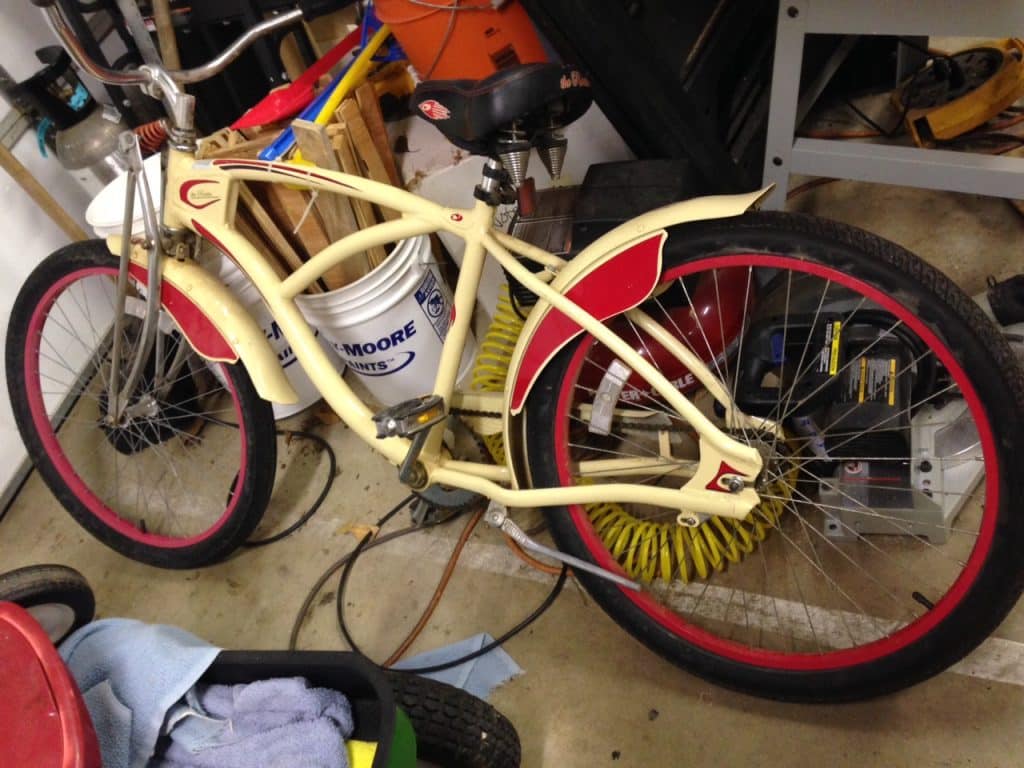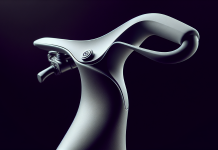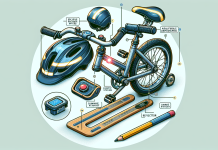Hey, fellow cyclist! Have you ever wondered if you can upgrade your cruiser bike’s tires to wider ones? If so, you’re in the right place. This article will explore swapping your current tires for more comprehensive options.
We’ll discuss the potential benefits, considerations, and any limitations you might encounter. So, let’s pedal right into it and find out if you can give your cruiser bike a broader tire makeover!
Table of Contents
Benefits of Wider Tires
Improved Stability
One of the key benefits of upgrading to wider tires on your cruiser bike is improved stability. Wider tires have a larger footprint on the ground, providing more traction and stability, especially when cornering or navigating uneven terrain. This increased stability can give you the confidence to ride with more control and peace of mind.
Enhanced Traction
Wider tires also offer enhanced traction, particularly on slippery or loose surfaces. The wider surface area of the tires allows for better grip, reducing the chances of your bike slipping or skidding. This can be especially advantageous when riding off-road or in wet conditions, where maintaining traction is essential for a safe and enjoyable riding experience.
Better Shock Absorption
Cruiser bikes are known for their comfort; wider tires can further enhance this aspect. The additional width of the tires provides more cushioning and better shock absorption, effectively reducing the impact of bumps and potholes on the road. This translates to a smoother and more comfortable ride, allowing you to enjoy your time on the bike without feeling every little jolt or vibration.
Increased Comfort
In addition to better shock absorption, wider tires increase comfort by offering a more forgiving ride. The wider surface area distributes your weight more evenly, reducing the pressure exerted on the tires and the bike frame. This, in turn, alleviates discomfort or numbness often associated with longer rides. With wider tires, you can pedal comfortably for extended periods without sacrificing enjoyment.
Considerations Before Upgrading to Wider Tires
Before deciding to upgrade to wider tires on your cruiser bike, there are a few considerations to keep in mind. These factors will ensure a successful and hassle-free transition to broader rubber.
Clearance
One of the most critical considerations is the clearance your bike frame and fork provide. Wider tires require more horizontal and vertical space to fit without causing interference. You should measure the current clearance between your existing tires and the frame or fork to ensure enough room for wider tires. Insufficient clearance may lead to rubbing or even damaging your bike during rides.
Frame Compatibility
Not all cruiser bike frames are designed to accommodate wider tires. It is crucial to consult your bike’s specifications or contact the manufacturer to determine the maximum tire width your frame can handle. Going beyond the recommended tire width may compromise the frame’s structural integrity and result in handling issues or even frame failure.
Fender Compatibility
If your cruiser bike has fenders installed, consider their compatibility with wider tires. Wider tires may require adjustments to the fender mounts or, in some cases, removing fenders altogether. Ensure that your chosen wider tires will not obstruct or interfere with the fenders, which could lead to rubbing or reduced clearance.
Brake Compatibility
Another crucial consideration is brake compatibility. Wider tires may require adjustments to your bike’s braking system to accommodate the increased width. You should check if your current brake calipers have enough reach to reach the braking surface on wider tires. If not, you may need to upgrade your brakes or make other necessary modifications to ensure safe and reliable stopping power.
Rim Width
The width of your bike’s rims also significantly determines the maximum tire width you can safely use. Ensuring your rims are wide enough to support wider tires properly is essential. Putting wider tires on narrow rims can lead to instability, compromised handling, and an increased risk of tire damage. Consult the manufacturer’s recommendations or seek the advice of a bike professional if you are unsure about your rim’s compatibility with wider tires.
Determining Maximum Tire Width
You can follow a few simple steps to determine the maximum tire width for your cruiser bike.
Checking the Fork and Frame
Start by visually inspecting your bike’s fork and frame. Look for any labels or markings that indicate the maximum tire width recommended by the manufacturer. You can use the existing tire width as a reference point if no specific information is available.
Measuring the Current Tire
Using a ruler or measuring tape, measure the width of your existing tire. This measurement will provide a baseline for determining how fast you can go. Remember that tire manufacturers often provide a range of acceptable tire widths for specific rims or frames. Ensure that the wider tires you consider fall within this range to avoid compatibility issues.
Consulting Manufacturer’s Specifications
If you are unsure about the maximum tire width for your bike, consult the manufacturer’s specifications. Most reputable bike manufacturers provide detailed information about tire compatibility, including the recommended width range for their various models. Their recommendations are based on extensive testing and engineering, ensuring optimal performance and safety. Contact the manufacturer directly or check their website for these specifications.
Modifying the Bike to Accommodate Wider Tires
Once you have determined the maximum tire width your cruiser bike can handle, you may need to make certain modifications to ensure a proper fit.
Adjusting the Brakes
If your wider tires require adjustments to the braking system, start by checking the reach of your brake calipers. Ensure that they can reach the braking surface of the broader tires without any issues. If adjustment is required, consult your bike’s user manual or seek the assistance of a professional bike mechanic. Proper brake adjustment is crucial for your safety, so it’s essential to get it right.
Repositioning Fenders
If your bike has fenders installed, you may need to reposition or modify them to accommodate the wider tires. Observe the clearance between the fenders and the tires, ensuring no rubbing or interference during rides. Sometimes, you may need to remove the fenders if they cannot be adjusted to provide adequate clearance.
Installing Wider Rims
If your bike’s rims are too narrow for the wider tires you wish to use, you may need to invest in wider rims. Wider rims provide better support and stability for wider tires, improving overall performance and preventing tire damage. However, replacing rims can be a more involved modification that requires professional assistance. Consult with a bike shop or an experienced wheel builder to ensure proper installation and compatibility.
Increasing Frame and Fork Clearance
Sometimes, you may need to increase the clearance between your bike’s frame and fork to accommodate wider tires. This can be achieved by adjusting the position of the brake calipers, removing unnecessary attachments or accessories, or, in extreme cases, replacing the fork or frame entirely. It is essential to consult with a professional if you are considering modifying your bike’s frame or fork to ensure safe and proper adjustments.
Choosing the Right Width for Your Cruiser Bike
When it comes to choosing the correct width for your cruiser bike, several factors need to be taken into consideration.
Preferred Terrain and Riding Style
Consider the types of terrain you plan to ride on and your preferred riding style. If you primarily ride on smooth paved roads or bike paths, narrower tires may be more suitable as they offer lower rolling resistance and greater efficiency. However, if your rides often involve off-road or rough terrains, wider tires are recommended to provide better grip, stability, and shock absorption.
Clearance Limitations
Refer back to the clearance considerations mentioned earlier. Select a tire width within the maximum recommended range for your bike’s frame, fork, and other components. Ignoring these limitations could lead to unsafe conditions or damage to your bike.
Maximum Tire Width Recommendations
Review the manufacturer’s recommendations for your specific bike model. They often provide a range of tire widths deemed optimal for the bike’s design and intended use. Stick to these recommendations to ensure compatibility and maximum performance.
Balancing Stability and Agility
Consider the trade-off between stability and agility when choosing the width of your cruiser bike tires. Wider tires offer enhanced stability, benefiting riders who value a smooth and comfortable ride. However, wider tires can compromise agility and maneuverability, particularly when navigating tight spaces or performing quick maneuvers. It is essential to strike a balance that aligns with your specific riding needs and preferences.
Effects of Wider Tires on Speed and Efficiency
While wider tires offer numerous benefits, you should be aware of a few trade-offs.
Increased Rolling Resistance
Wider tires have a larger contact patch with the ground, increasing rolling resistance. This means it will take slightly more effort to pedal and maintain speed than narrower tires. However, wider tires’ increased grip and stability often outweigh this slight decrease in efficiency, especially for cruiser bike riders who prioritize comfort over speed.
Reduced Aerodynamics
Wider tires can also create more aerodynamic drag when riding at higher speeds. The more comprehensive profile of these tires catches more wind, resulting in increased resistance and reduced efficiency. If you regularly ride at higher speeds and prioritize aerodynamics, you may consider narrower tires offering better aerodynamic properties.
Slight Decrease in Speed
Due to the increased rolling resistance and decreased aerodynamics, it’s important to note that wider tires may result in a slight decrease in overall speed. However, this trade-off is worth the added benefits of wider tires for most cruiser bike riders, who prioritize comfort and stability over outright speed.
Potential Improvements with Wider Tires
Despite the small trade-offs, wider tires offer several potential improvements to your riding experience.
Better Grip on Loose Surfaces
Wider tires provide a larger contact surface area with the ground, improving grip on loose surfaces such as gravel or dirt trails. This enhanced traction allows you to navigate these terrains with greater confidence and control, minimizing the risk of slips or slides.
Superior Handling on Rough Terrains
Cruiser bikes are often associated with leisurely rides on smooth roads, but broader tires can extend your biking horizons. With enhanced shock absorption and stability, wider tires are well-suited for tackling rough terrains. Whether you encounter uneven pavement, tree roots, or rocky trails, wider tires can provide a smoother ride and better handling, allowing you to explore new paths and enjoy more diverse cycling experiences.
Enhanced Shock Absorption and Comfort
As mentioned earlier, wider tires offer superior shock absorption. The additional width allows them to soak up bumps, cracks, and road imperfections more effectively, resulting in a smoother and more comfortable ride. This feature benefits cruiser bike rider who value comfort and seek a relaxed riding experience.
Possible Drawbacks of Wider Tires
While wider tires offer many benefits, it is essential to consider their potential drawbacks.
Heavier Weight
Wider tires typically weigh more than their narrower counterparts due to the additional material used. This increased weight can affect the bike’s overall performance, especially in acceleration and climbing. However, for cruiser bike riders not concerned with speed or intense hill climbing, the added weight of wider tires may not be a significant issue.
Decreased Maneuverability
Due to their more comprehensive profile, wider tires can slightly compromise the maneuverability of your cruiser bike, particularly in tight corners or when making quick turns. The increased width affects the bike’s handling characteristics, requiring slightly more effort to change direction. However, this trade-off is minimal and easily manageable for most cruiser bike riders, prioritizing stability and comfort over aggressive maneuverability.
Incompatible with Narrow Bike Paths
If you frequently ride on narrow bike paths or lanes, wider tires may not be the best option. The increased width can make navigating tight spaces more challenging, especially when encountering other riders or obstacles. It is essential to consider the width of your local riding environment and ensure that wider tires will not impede your ability to ride comfortably or safely.
Professional Assistance
If you are uncertain about the compatibility of wider tires with your cruiser bike or hesitant to make modifications on your own, seeking professional assistance is always a good idea.
Consulting a Bike Shop
Visit a local bike shop to discuss your specific needs and concerns. Bike shop experts can provide valuable insights and advice, helping you make informed decisions about tire upgrades and necessary modifications. They can also recommend suitable tire options based on your riding style, preferences, and the bike’s specifications.
Seeking Expert Advice
If you are unsure about certain technical aspects or lack experience with bike modifications, consider contacting seasoned cyclists or bike enthusiasts with expertise in the field. Online forums or community groups dedicated to biking can be excellent resources for seeking advice, tips, and guidance from experienced individuals.
Getting a Professional Installation
Professional installation is always an option if you are not comfortable or confident in performing the necessary modifications yourself. A bike shop or a qualified bike mechanic can handle the entire process, ensuring that the wider tires are installed correctly and that any required adjustments or modifications are made accurately. Professional installation can give you peace of mind and ensure your bike is in optimal condition for safe and enjoyable rides.
Conclusion
Upgrading to wider tires on your cruiser bike can be a worthwhile investment, offering improved stability, enhanced traction, better shock absorption, and increased comfort. However, before making the switch, it is crucial to consider factors such as clearance, frame compatibility, fender compatibility, brake compatibility, and rim width. Determining the maximum tire width requires checking the fork and frame, measuring the current tire, and consulting the manufacturer’s specifications.
Modifying the bike to accommodate wider tires may involve adjusting the brakes, repositioning fenders, installing wider rims, or increasing frame and fork clearance. When choosing the correct width for your cruiser bike, consider your preferred terrain, clearance limitations, maximum tire width recommendations, and the balance between stability and agility. Wider tires may slightly impact speed and efficiency due to increased rolling resistance and reduced aerodynamics.
However, they offer benefits such as better grip on loose surfaces, superior handling on rough terrains, and enhanced shock absorption and comfort. Possible drawbacks include heavier weight, decreased maneuverability, and incompatibility with narrow bike paths.
Seeking professional assistance, consulting a bike shop, seeking expert advice, or opting for professional installation can help ensure a smooth and successful tire upgrade. Ultimately, wider tires can enhance your cruiser bike riding experience by providing added comfort, stability, and confidence.










































